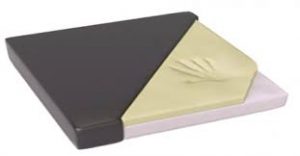The Art of Foam Cushion Maintenance: How Often Should You Change Them?
 Foam cushions are an important part of the construction of common types of home furniture such as sofas, chairs, or bedding. Like any other household equipment item, they are prone to wear and tear after a particular period of time and their glossy appearance will eventually fade away. This then begs the question: How regularly should one change their foam cushions? Knowledge of the lifespan of these cushions and how to properly maintain them will be instrumental in making sure that they are always kept in good shape, thereby giving the user ample living space.
Foam cushions are an important part of the construction of common types of home furniture such as sofas, chairs, or bedding. Like any other household equipment item, they are prone to wear and tear after a particular period of time and their glossy appearance will eventually fade away. This then begs the question: How regularly should one change their foam cushions? Knowledge of the lifespan of these cushions and how to properly maintain them will be instrumental in making sure that they are always kept in good shape, thereby giving the user ample living space.
Several factors will lead to the different lifespans of the foam cushions that are often used in sofas, chairs, and beds. Some of the factors that will determine the length of time before a foam cushion needs to be replaced include the duration the foam has been used, the type of foam used, and the quality of the cushion covers. In general, one should assume that a cushion consisting of high-quality foam materials is expected to last for an extended 5-10 years based on proper maintenance.
Factors Affecting the Longevity of Cushions:
Foam Quality:
The foam quality is thus a crucial determinant of how long the foam will last. High-density foams are usually more durable and long-lasting. As such, inferior and low-density foams may not respond as well to the weight and pressure of human bodies. See the different types of foam at The Foam Factory if you’d like to compare different foam replacement types with varying levels of quality.
Amount of Usage:
Heavily used furniture has cushions that wear out faster than the occasional usage. Sofas and armchairs in a main living space or a favorite armchair may need replacement of cushions regularly when compared to a much less often used space.
Maintenance Requirements and Care:
Simply by maintaining and caring for the foam cushions, it is easy to extend their longevity. Fluffing, along with regularly rotating cushions, keeping the covers clean, and adding a protective cover on them provides a simple way of extending cushion life.
Indicators of Cushion Condition:
Sagginess:
Sagging is one of the most subtle common signs that you need to get your foam cushion replaced. Sagging is apparent when cushions become saggy in such a way that they don’t fully spring back into shape with full form. This might be a clear indication that the foam inside the cushions is not offering full support.
Visible Wear and Tear:
Inspect them for fraying on the fabric, holes, or compression marks on the foam. If the covers for the cushions are generally good, but the cushions inside are disintegrating, it may be the right time to replace the foam inserts instead.
Discomfort:
If repositioning oneself and adjusting is required throughout the evening to become comfortable on the furniture, this could be a sign that the foam is not offering such support as it may previously have been doing.
In conclusion, the frequency with which you should change your foam cushions depends on various factors. Knowing how long a material is expected to last, as well as its quality and the amount of wear and tear it is subjected to in a home will let you know just how long it is before you might need to replace them. Good maintenance practices like fluffing, flipping, and cleaning your foam cushions regularly can allow your cushions to last for approximately 10 years. Watch for signs of wear and tear, and invest in new foam when your cushions stop being supportive or comfortable. By doing so, you ensure a cozy and inviting living space for years to come.
